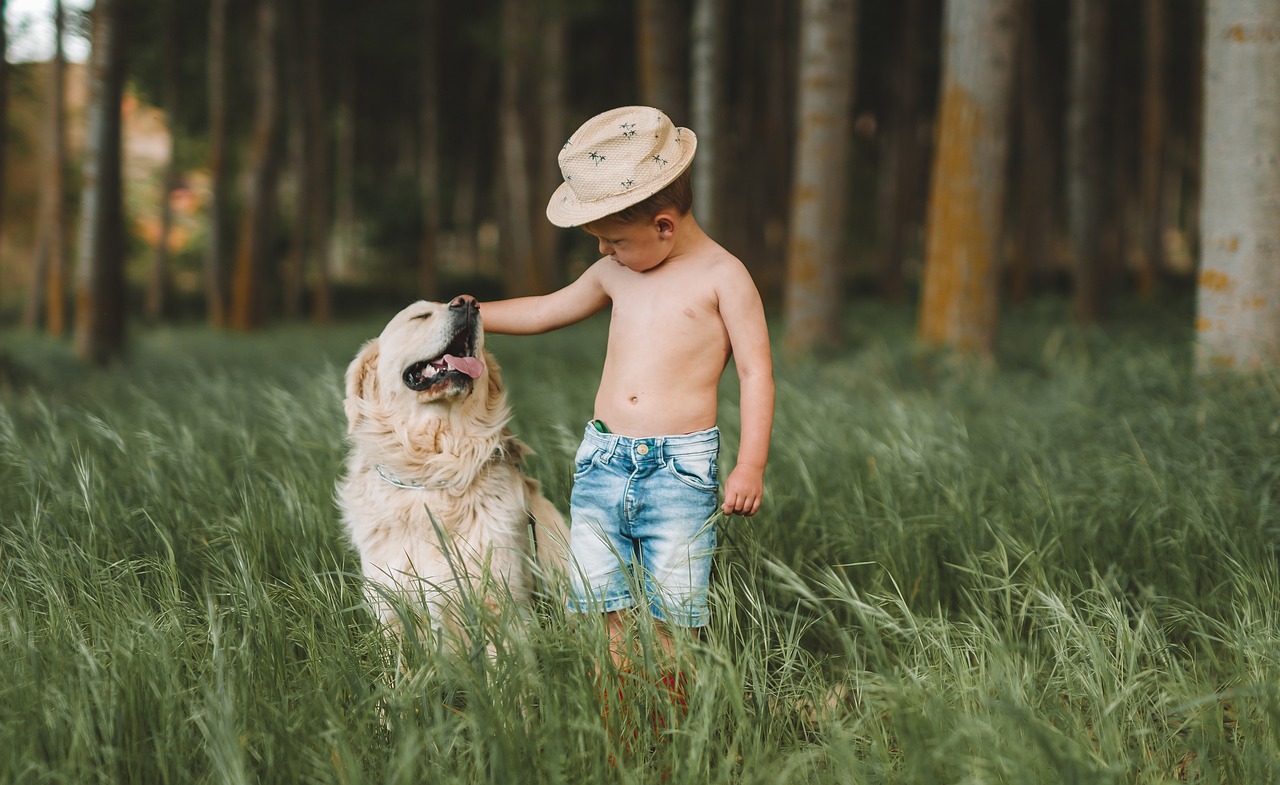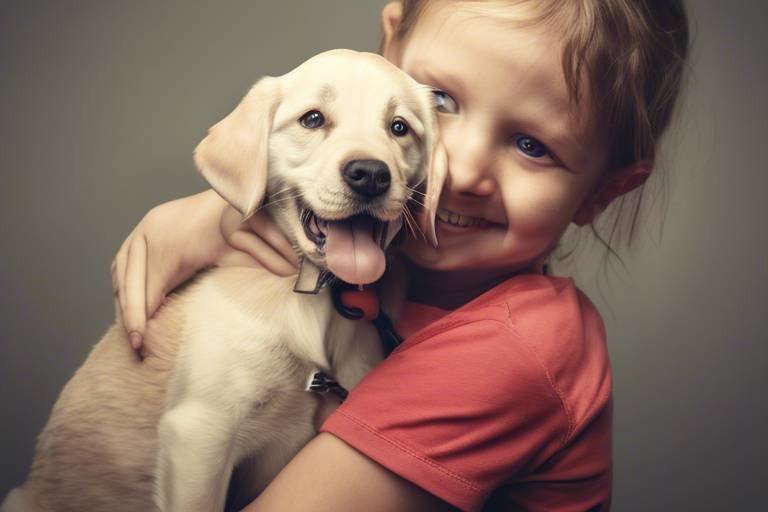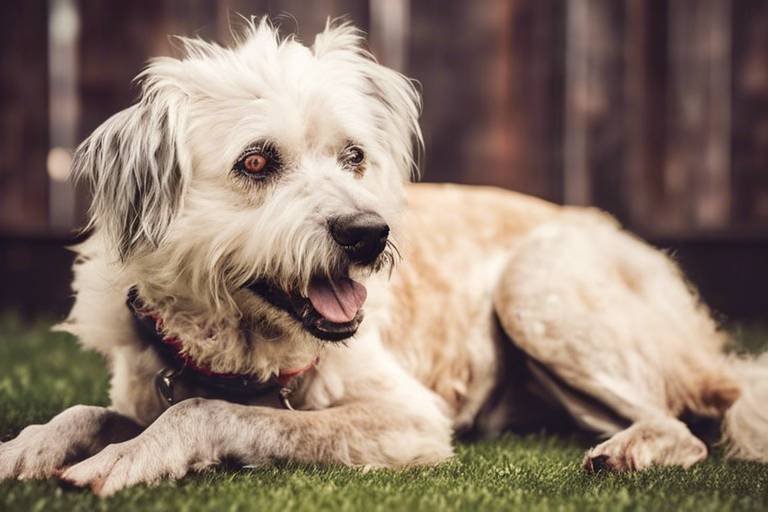The Importance of Understanding Breed Traits Before Adoption
Adopting a pet is one of the most rewarding decisions you can make, but it’s also one of the most significant commitments you'll ever undertake. Before you rush to the nearest shelter or rescue organization, it’s crucial to pause and reflect on the importance of understanding breed traits. Each dog breed has its own unique set of characteristics, quirks, and needs. By recognizing these traits, you can ensure a harmonious relationship between you and your future furry friend, ultimately enhancing the overall adoption experience.
Imagine bringing home a high-energy dog when you lead a more sedentary lifestyle. The result could be a mismatched partnership filled with frustration for both you and your pet. Conversely, adopting a low-energy breed might leave you feeling unchallenged and bored if you’re an active individual. Therefore, understanding breed characteristics is not just beneficial; it’s essential for ensuring compatibility with your lifestyle and environment.
Moreover, adopting a pet is not just about saving a life; it’s about creating a lasting bond. When you know what to expect from a particular breed, you can prepare your home, schedule, and even your family dynamics to accommodate your new member. This preparation can significantly reduce the chances of behavioral issues, making the transition smoother for everyone involved.
In this article, we will delve deeper into various aspects of breed traits, including temperament, exercise needs, socialization requirements, and health considerations, ensuring that you have all the information you need to make an informed and compassionate decision.
Recognizing the unique traits of different dog breeds helps potential adopters make informed decisions, ensuring compatibility with their lifestyle and environment. For example, some breeds are known for their loyalty and protective instincts, while others are celebrated for their playful and friendly demeanor. By understanding these characteristics, you can select a breed that aligns with your expectations and lifestyle.
Furthermore, breed characteristics can also influence the training process. Some breeds are more eager to please and easier to train, while others may require more patience and consistent reinforcement. By knowing what to expect, you can tailor your approach to training, setting both you and your dog up for success.
Temperament varies significantly among breeds, influencing behavior and training needs. Understanding these differences is crucial for successful integration into a new home. For instance, breeds like Golden Retrievers and Labrador Retrievers are often known for their friendly and easy-going nature, making them great family pets. On the other hand, breeds like Chihuahuas or Terriers may exhibit more independent or stubborn traits, requiring a different approach to training and socialization.
Some breeds require more exercise and stimulation, while others are content with a quieter lifestyle. Knowing this can guide adopters toward a suitable match. If you’re an active person who enjoys outdoor activities, you might find a high-energy breed like a Border Collie or a Siberian Husky to be a perfect companion. In contrast, if you prefer cozy evenings on the couch, a low-energy breed like a Bulldog or a Basset Hound might be more your speed.
High-energy breeds need ample physical activity and mental challenges to thrive, making them ideal for active families or individuals. These dogs often require at least an hour of exercise daily, which can include walks, runs, or playtime. Without this stimulation, they may become bored and develop destructive behaviors.
On the flip side, low-energy breeds are perfect companions for those who prefer a more relaxed lifestyle, requiring less exercise and more cuddling time. These breeds are typically satisfied with short walks and plenty of downtime, making them ideal for apartment living or for those with mobility challenges.
Different breeds have varying socialization requirements. Understanding these needs helps adopters prepare for interactions with other pets and people. Some breeds thrive on social interaction and enjoy meeting new friends, while others may be more reserved or protective. By being aware of these tendencies, you can create a welcoming environment that encourages positive social experiences for your dog.
Certain breeds are predisposed to specific health issues. Awareness of these potential problems can assist adopters in making responsible choices. For instance, large breeds may be prone to hip dysplasia, while smaller breeds might be more susceptible to dental issues. Knowing these risks allows you to seek appropriate veterinary care and preventive measures early on.
Knowledge of prevalent health concerns in particular breeds can guide adopters in seeking veterinary care and preventive measures. For example, breeds like Bulldogs and Pugs often face respiratory issues due to their brachycephalic (flat-faced) structure. Understanding these breed-specific health issues can help you prepare for potential medical needs down the road.
Understanding the lifespan and care needs of different breeds ensures that adopters are prepared for the long-term commitment of pet ownership. Some breeds may live well into their teens, while others may have shorter lifespans. By knowing what to expect, you can make informed decisions about your pet’s future and ensure that you’re ready for the journey ahead.
- What is the most important factor to consider when adopting a dog? Understanding the breed's traits and how they fit into your lifestyle is crucial.
- How can I determine the right breed for me? Assess your activity level, living situation, and personal preferences to find a breed that matches your lifestyle.
- Are some breeds easier to train than others? Yes, some breeds are more eager to please and can be trained more easily than others.
- What health issues should I be aware of for specific breeds? Research common health concerns associated with the breed you're considering to prepare for potential vet visits.

Understanding Breed Characteristics
This article explores the significance of recognizing breed characteristics to ensure a harmonious relationship between pets and their owners, enhancing the overall adoption experience.
When it comes to adopting a furry friend, understanding breed characteristics is absolutely crucial. Each dog breed comes with its own unique set of traits, behaviors, and needs that can significantly impact how well they fit into your lifestyle. Imagine bringing home a high-energy pup when you’re more of a couch potato! It’s like trying to mix oil and water; they just don’t blend well together. By recognizing these unique traits, potential adopters can make informed decisions that not only benefit them but also ensure the well-being of the dog.
For instance, some breeds are known for their intelligence and trainability, while others may exhibit stubbornness or a strong independent streak. This can affect how quickly they learn commands or adapt to new environments. Additionally, certain breeds might require more mental stimulation and physical activity than others. If you’re a busy professional who spends long hours at work, adopting a breed that thrives on constant activity could lead to behavioral issues due to pent-up energy. On the flip side, if you’re looking for a laid-back companion, breeds that are more relaxed and require less exercise could be your perfect match.
Moreover, breed characteristics also encompass grooming needs. Some dogs have coats that require regular grooming, while others are low-maintenance. This is another important factor to consider, as it can impact your time and financial commitment. For example, breeds like the poodle or Shih Tzu need regular grooming sessions, while a Beagle or Boxer might only need the occasional bath. It’s essential to weigh these factors before making a decision, as they play a significant role in the long-term care of your pet.
Ultimately, understanding breed characteristics is not just about picking a cute face; it’s about ensuring a harmonious relationship between you and your new companion. It’s about making sure that both you and your dog can thrive together. So, before you take the plunge into pet parenthood, take the time to research and understand the breeds you’re interested in. This knowledge will pave the way for a fulfilling and lasting bond.
Temperament varies significantly among breeds, influencing behavior and training needs. Understanding these differences is crucial for successful integration into a new home.
Some breeds require more exercise and stimulation, while others are content with a quieter lifestyle. Knowing this can guide adopters toward a suitable match.
High-energy breeds need ample physical activity and mental challenges to thrive, making them ideal for active families or individuals.
Low-energy breeds are perfect companions for those who prefer a more relaxed lifestyle, requiring less exercise and more cuddling time.
Different breeds have varying socialization requirements. Understanding these needs helps adopters prepare for interactions with other pets and people.
Certain breeds are predisposed to specific health issues. Awareness of these potential problems can assist adopters in making responsible choices.
Knowledge of prevalent health concerns in particular breeds can guide adopters in seeking veterinary care and preventive measures.
Understanding the lifespan and care needs of different breeds ensures that adopters are prepared for the long-term commitment of pet ownership.
- What should I consider when choosing a breed? It's essential to consider your lifestyle, activity level, and the dog's grooming needs.
- How can I learn about a breed's temperament? Research online, talk to breeders, or visit shelters to interact with different breeds.
- Are some breeds better for families with children? Yes, some breeds are known for their patience and gentleness with kids, like Golden Retrievers or Labrador Retrievers.
- What if I want a dog but have a busy schedule? Consider adopting a low-energy breed that doesn’t require extensive exercise.

The Role of Temperament
When it comes to welcoming a furry friend into your home, understanding temperament is absolutely essential. Each dog breed comes with its own unique set of personality traits that can significantly impact how they interact with their owners and their environment. Imagine bringing home a lively Border Collie only to find out that your lifestyle is more suited for a laid-back Bulldog! This mismatch can lead to frustration for both the pet and the owner. Therefore, recognizing these temperament traits before adoption is crucial for a smooth transition.
Temperament influences not just the behavior of the dog but also its training needs. For instance, some breeds are more eager to please and easier to train, while others may have a stubborn streak that requires a more patient approach. Understanding these nuances can make a world of difference in how effectively you can teach your new companion the rules of your home. It's like trying to teach an old dog new tricks; if the dog isn’t inclined to learn, it can be quite the challenge!
Moreover, it’s important to consider how active or calm a breed is. Some dogs are like a burst of fireworks, full of energy and ready to play at a moment’s notice. Others are more like a gentle breeze, content to lounge around the house. Knowing whether you’re adopting a high-energy or low-energy breed can help you prepare for the kind of lifestyle adjustments you’ll need to make. For example, if you’re an avid runner, a high-energy breed might be your ideal partner. On the flip side, if you prefer cozy nights on the couch, a low-energy breed could be the perfect fit.
Active breeds, such as Australian Shepherds and Jack Russell Terriers, thrive on physical activity and mental challenges. They require regular exercise and stimulation to keep them happy and healthy. If they don't get enough activity, they may resort to destructive behaviors out of boredom. On the other hand, calm breeds like Basset Hounds and Shih Tzus are more than happy to curl up next to you and enjoy a quiet evening. They require less exercise and can adapt well to a more sedentary lifestyle.
High-energy breeds are often characterized by their boundless enthusiasm and zest for life. They need ample physical activity—think long walks, runs, or even agility training—to keep them content. If you're considering adopting a high-energy breed, ask yourself:
- Do I have enough time to dedicate to daily exercise?
- Am I prepared to engage in play sessions to keep my dog mentally stimulated?
- Can I provide a safe space for my dog to run and explore?
Answering these questions can help ensure that you choose a breed that fits seamlessly into your lifestyle.
Conversely, low-energy breeds are perfect for those who appreciate a more relaxed lifestyle. These dogs are often satisfied with short walks and plenty of cuddle time on the couch. If you find joy in lazy afternoons and quiet evenings, a low-energy breed might just be your ideal companion. However, it's still essential to provide them with some form of exercise to maintain their health, even if it’s just a gentle stroll around the block.
Ultimately, understanding a breed's temperament is about more than just matching energy levels. It’s about creating a harmonious relationship where both you and your new furry friend can thrive. So, take the time to research and reflect on what you want in a pet. This investment of time and effort can lead to a rewarding experience for both you and your future companion.
- What is temperament in dogs? Temperament refers to the innate personality traits and behaviors that characterize a dog breed, influencing how they interact with humans and other animals.
- How can I assess a dog's temperament before adoption? Spend time with the dog, observe their behavior in different situations, and ask the shelter or breeder about the dog's history and personality.
- Are some breeds more trainable than others? Yes, some breeds are naturally more eager to please and easier to train, while others may require more patience and consistent training methods.
- What if I have a busy lifestyle? If your lifestyle is busy, consider adopting a low-energy breed that requires less exercise and is more adaptable to a relaxed home environment.
Active vs. Calm Breeds
When it comes to choosing a furry friend, understanding the difference between active and calm breeds is crucial for a harmonious home. Imagine bringing a lively puppy into your quiet apartment—sounds fun, right? But what if that pup needs to run for hours every day while you’re just trying to enjoy your evening tea? This scenario highlights the importance of knowing your potential pet's energy levels. Active breeds, like the Border Collie or Australian Shepherd, are like the Energizer Bunny—they just keep going and going! These dogs thrive on physical activity and mental stimulation, requiring owners who can match their enthusiasm. They love to play fetch, go for long runs, and engage in challenging games that keep their minds sharp.
On the flip side, calm breeds such as the Bulldog or Shih Tzu are more like that cozy blanket you wrap around yourself on a chilly evening. They enjoy short walks and are perfectly content snuggling on the couch while you binge-watch your favorite series. These breeds often require less exercise, making them ideal for individuals or families who prefer a more laid-back lifestyle. However, don’t mistake their calm demeanor for a lack of need for care and attention; they still crave companionship and love.
So, how do you know which type of breed is right for you? Here are some key factors to consider:
- Your Lifestyle: Are you an outdoor enthusiast or more of a homebody?
- Space: Do you have a large backyard or live in a small apartment?
- Time Commitment: How much time can you dedicate to exercising and playing with your dog?
By carefully evaluating these factors, you can find a breed that fits seamlessly into your life. Remember, adopting a pet is a long-term commitment, and understanding whether an active or calm breed aligns with your lifestyle can make all the difference in ensuring a happy, healthy relationship. After all, a happy dog leads to a happy home!
Q: How can I determine if a breed is active or calm?
A: Research breed characteristics online, consult with breeders or shelters, and talk to current owners to get a sense of their energy levels.
Q: Can I train an active dog to be calmer?
A: While you can train any dog to have better manners and relaxation skills, active breeds will still need regular exercise to stay healthy and happy.
Q: Are calm breeds less affectionate?
A: Not at all! Calm breeds can be just as loving and affectionate as their active counterparts; they simply express it in a more relaxed manner.
High-Energy Breeds
When it comes to our furry friends, are like the turbocharged sports cars of the canine world. They zoom around, full of life and enthusiasm, and they require a lifestyle that matches their vibrant energy levels. If you’re considering adopting a high-energy breed, it’s essential to understand what that entails. These dogs thrive on activity and mental stimulation, meaning they need more than just a leisurely walk around the block. Think of them as your personal trainers; they’ll keep you active, engaged, and perhaps even a little out of breath!
High-energy breeds often exhibit traits that make them ideal for families or individuals who lead an active lifestyle. Breeds such as Border Collies, Australian Shepherds, and Labrador Retrievers are famous for their boundless energy and playful personalities. They love to run, jump, and play fetch, and they often excel in activities like agility training, obedience competitions, and even canine sports. If you’re someone who enjoys outdoor adventures, hiking, or running, these breeds can be the perfect companions to join you on your escapades.
However, it’s crucial to recognize that adopting a high-energy breed comes with its own set of responsibilities. They require consistent exercise—think at least 60 to 120 minutes a day, depending on the breed. Without this, they can become bored and may resort to destructive behaviors like chewing furniture or digging up the garden. Imagine a child with too much energy stuck indoors; it’s not pretty! Regular playtime and mental challenges, such as puzzle toys or training exercises, are vital to keep them happy and healthy.
To give you a clearer picture, here’s a quick comparison of some popular high-energy breeds:
| Breed | Exercise Needs | Training Requirements |
|---|---|---|
| Border Collie | 2 hours daily | Highly trainable, needs mental stimulation |
| Australian Shepherd | 1.5-2 hours daily | Very intelligent, enjoys learning |
| Labrador Retriever | 1-2 hours daily | Easy to train, loves to please |
Ultimately, if you’re up for the challenge, a high-energy breed can bring immense joy and companionship into your life. They are often loyal, loving, and incredibly fun to be around. Just remember, they thrive in environments where they can stretch their legs and engage their minds. So, if you’re ready to embrace a lifestyle filled with adventure, laughter, and perhaps a few muddy paw prints, a high-energy breed might just be the perfect addition to your family!
- What are some examples of high-energy dog breeds? Breeds like Border Collies, Australian Shepherds, and Labrador Retrievers are known for their high energy levels.
- How much exercise do high-energy breeds need? Typically, they require at least 60 to 120 minutes of exercise each day.
- Can high-energy dogs adapt to a less active lifestyle? While they can adapt, it’s crucial to provide them with enough physical and mental stimulation to prevent boredom and destructive behavior.
Low-Energy Breeds
When it comes to choosing a furry companion, can be the perfect match for those who enjoy a more laid-back lifestyle. These breeds are typically less demanding in terms of exercise and mental stimulation, making them ideal for individuals or families who prefer relaxing evenings on the couch rather than long runs or vigorous play sessions. Imagine coming home after a long day at work, sinking into your favorite chair, and having your loyal dog curl up beside you, content and happy. That's the beauty of low-energy breeds!
Low-energy dogs often thrive in environments where they can enjoy leisurely strolls rather than rigorous hikes. Breeds like the Bulldog, Basset Hound, and Shih Tzu are renowned for their calm demeanor and loving nature. These dogs are not only affectionate but also require less exercise than their high-energy counterparts. For instance, while a Border Collie might need hours of activity each day, a Bulldog may find joy in a simple walk around the block followed by a cozy nap.
It's essential to understand that low-energy doesn't mean low-maintenance. These breeds still need regular vet check-ups, grooming, and socialization to stay healthy and happy. However, their lower exercise requirements can make them easier to manage for busy individuals or those with limited mobility. In fact, many low-energy breeds are incredibly adaptable and can thrive in smaller living spaces, such as apartments or condos, as long as they receive love and attention from their owners.
When considering adopting a low-energy breed, it's also crucial to think about their socialization needs. While they may not require as much physical activity, these dogs still benefit greatly from interactions with other pets and people. Regular trips to the dog park or playdates with other dogs can help keep their social skills sharp and their spirits high. A well-socialized dog is often a happy dog, regardless of their energy level!
In conclusion, low-energy breeds offer a wonderful option for those looking for a loving companion without the demands of high-energy exercise routines. They bring joy and comfort to our lives, reminding us that sometimes, the best moments are the quiet ones shared with a loyal friend. If you think a low-energy breed might be the right fit for you, consider visiting your local shelter or rescue organization to meet these gentle souls. You might just find your perfect match!
- What are some examples of low-energy dog breeds? Some popular low-energy breeds include Bulldogs, Basset Hounds, Shih Tzus, and Cavalier King Charles Spaniels.
- How much exercise do low-energy breeds need? Generally, low-energy breeds require about 30 minutes to an hour of light exercise each day, such as leisurely walks or playtime indoors.
- Are low-energy breeds good for families? Yes! Many low-energy breeds are affectionate and great with children, making them excellent family pets.
- Can low-energy dogs live in apartments? Absolutely! Low-energy breeds often adapt well to apartment living, provided they receive regular walks and attention from their owners.
Socialization Needs
When it comes to welcoming a furry friend into your home, understanding their is paramount. Different dog breeds exhibit varying levels of sociability, which directly impacts how they interact with other animals and people. For instance, some breeds, like the Labrador Retriever, are naturally outgoing and thrive in social settings. They often enjoy meeting new people and playing with other dogs. On the flip side, breeds such as the Chow Chow can be more reserved and may require a bit more time to warm up to new faces. This is why recognizing these traits before adoption is crucial; it sets the stage for a peaceful and enjoyable relationship.
Socialization is not just about being friendly; it’s about preparing your pet for the world. A well-socialized dog is typically more adaptable and less prone to behavioral issues. Imagine trying to navigate a busy park with a dog that hasn't been exposed to various environments, sounds, and people. It can be overwhelming for both you and your pet! By understanding the socialization needs of your chosen breed, you can create a tailored plan to help them adjust comfortably to new experiences.
Here’s where things get interesting: the age at which you adopt your dog plays a significant role in their socialization journey. Puppies are like little sponges, soaking up experiences and learning from their surroundings. If you adopt a puppy, it’s essential to expose them to different environments, people, and other animals during their formative weeks. This exposure can shape their personalities and help them grow into confident adults. On the other hand, if you’re considering an older dog, they may already have established social habits. Understanding their past experiences can help you determine the best approach for their integration into your home.
To give you a clearer picture, let’s consider a few essential socialization practices that can benefit your new pet:
- Early Exposure: Introduce your puppy to various sights, sounds, and experiences while they are still young.
- Positive Reinforcement: Reward your dog for calm behavior during social interactions to reinforce good habits.
- Controlled Environments: Start socializing in low-stress environments before gradually introducing more stimulating settings.
- Regular Outings: Make it a habit to take your dog on regular walks or to dog parks to enhance their social skills.
Remember, the goal of socialization is to build a well-rounded dog that can confidently navigate the world around them. It’s not just about preventing behavioral problems; it’s about enriching their lives and yours. A well-socialized dog can be a delightful companion, enhancing your daily adventures and making every outing a joy. So, as you prepare to adopt, keep in mind the socialization needs of your future pet. It’s a vital step in ensuring a harmonious and fulfilling relationship.
- What is socialization, and why is it important for dogs?
Socialization is the process of exposing your dog to various environments, people, and other animals to help them become well-adjusted and confident. It is crucial for preventing behavioral issues and ensuring your pet can handle different situations. - At what age should I start socializing my puppy?
Ideally, you should start socializing your puppy between 3 to 14 weeks of age, as this is a critical period for their development. - Can older dogs be socialized?
Yes, older dogs can still be socialized, but the process may take longer, especially if they have had negative experiences in the past. Patience and positive reinforcement are key! - How do I know if my dog is well-socialized?
A well-socialized dog will typically remain calm and relaxed in new situations and around unfamiliar people and animals. They should be able to interact positively without showing fear or aggression.

Health Considerations
When it comes to bringing a new furry friend into your home, are paramount. Every dog breed comes with its own set of health traits and potential issues, which can greatly impact their quality of life and your experience as an owner. It's vital to be aware of these factors, not just for the sake of your pet's health but also to ensure you can provide the necessary care. After all, adopting a dog is a long-term commitment, and understanding breed-specific health issues can help you make informed decisions.
Some breeds are more prone to certain health conditions than others. For instance, large breeds like Great Danes and German Shepherds may face issues like hip dysplasia, while smaller breeds such as Dachshunds can be susceptible to back problems. Being aware of these predispositions can help you take preventive measures early on. Regular veterinary checkups, a balanced diet, and appropriate exercise can go a long way in keeping your dog healthy and happy.
Moreover, it's not just about the physical ailments; mental health is equally crucial. Certain breeds require more mental stimulation than others. For example, working breeds like Border Collies thrive on challenges and tasks, while more laid-back breeds may be content with a simple routine. Understanding these needs helps in creating an environment that fosters both physical and mental well-being.
Here’s a quick look at some common breed-specific health issues:
| Breed | Common Health Issues |
|---|---|
| Bulldog | Respiratory issues, hip dysplasia |
| Golden Retriever | Hip dysplasia, cancer |
| Beagle | Obesity, ear infections |
| Dachshund | Intervertebral disc disease, obesity |
Additionally, understanding the longevity of different breeds can help you prepare for the long-term commitment of pet ownership. Some breeds, like Chihuahuas, can live well into their late teens, while larger breeds may only live for 7 to 10 years. This difference can influence not just your emotional investment but also your financial planning for veterinary care, food, and other necessities.
In conclusion, being informed about the health considerations associated with different breeds is essential for any prospective dog owner. This knowledge empowers you to make responsible choices, ensuring that your new best friend enjoys a long, healthy, and fulfilling life by your side. So, before you adopt, take the time to research and understand the unique health traits of the breed you’re interested in. It’s an investment in happiness for both you and your future pet!
- What are the most common health issues in dogs?
Common health issues include hip dysplasia, obesity, dental problems, and skin conditions. Each breed may have specific predispositions, so it's essential to research.
- How often should I take my dog to the vet?
Regular check-ups are recommended at least once a year. Older dogs or those with health issues may require more frequent visits.
- What can I do to ensure my dog stays healthy?
Provide a balanced diet, regular exercise, mental stimulation, and routine veterinary care to maintain your dog's health.
Common Breed-Specific Health Issues
When it comes to adopting a furry friend, being aware of is crucial for any potential pet owner. Just like humans, different dog breeds come with their own unique set of health challenges. These issues can range from minor ailments to serious conditions that may require lifelong management. For instance, large breeds like Great Danes are known to be prone to bloat, a potentially life-threatening condition, while smaller breeds such as Chihuahuas might face dental problems due to their tiny mouths. This is why understanding these health risks can make a significant difference in your pet's well-being.
Moreover, it’s not just about knowing the breed; it’s about being prepared to provide the necessary care. For example, Bulldogs often suffer from respiratory issues due to their short snouts, which means they may need special attention in hot weather. Similarly, Retrievers can be prone to hip dysplasia, making it vital for owners to maintain a healthy weight and engage in low-impact exercises. By being informed, you can take proactive steps to mitigate these risks and ensure your pet lives a long, healthy life.
Here’s a brief overview of some common breed-specific health issues:
| Breed | Common Health Issues |
|---|---|
| German Shepherd | Hip Dysplasia, Degenerative Myelopathy |
| Boxer | Heart Conditions, Cancer |
| Beagle | Obesity, Ear Infections |
| Pug | Respiratory Problems, Eye Issues |
| Dalmatian | Deafness, Urinary Stones |
As you can see, each breed has its particular vulnerabilities. Therefore, it’s essential to consult with a veterinarian who is familiar with your dog's breed to establish a proper health care plan. Regular check-ups, a balanced diet, and adequate exercise can go a long way in preventing many of these issues. Remember, being informed is not just about knowing what to expect; it’s about being proactive in your pet's health journey.
Q: How can I find out more about breed-specific health issues?
A: Research online, consult breed-specific organizations, and speak with your veterinarian for detailed information about the breed you are considering.
Q: Are some breeds more prone to health issues than others?
A: Yes, certain breeds are genetically predisposed to specific health problems. It's important to understand these risks before adopting.
Q: What should I do if I notice signs of health issues in my dog?
A: If you observe any unusual behavior or symptoms, contact your veterinarian immediately for an evaluation and appropriate care.
Longevity and Care Requirements
When considering the addition of a furry friend to your family, understanding their longevity and care requirements is paramount. Different breeds come with varying life expectancies, and this can significantly impact your decision-making process. For instance, smaller breeds often live longer than larger ones, with some tiny dogs reaching up to 20 years of age, while giant breeds may only enjoy 7 to 10 years of companionship. This difference is not just a number; it translates into the emotional commitment and planning needed throughout your pet's life.
Moreover, each breed has its own unique set of care requirements that can affect your daily routine. For example, some breeds may require frequent grooming, while others may be more low-maintenance. Understanding these needs can help you prepare for the responsibilities that come with pet ownership. Here’s a quick comparison of some popular breeds and their average lifespans along with their general care requirements:
| Breed | Average Lifespan | Care Requirements |
|---|---|---|
| Chihuahua | 12-20 years | Minimal grooming, regular vet check-ups |
| Labrador Retriever | 10-12 years | Moderate grooming, daily exercise |
| Great Dane | 7-10 years | Frequent vet visits, joint care |
| Poodle | 12-15 years | Regular grooming, mental stimulation |
As you can see, the care requirements can vary widely. Some breeds, like the Poodle, thrive on mental challenges and grooming, while others, like the Chihuahua, require less grooming but still need regular vet visits to maintain their health. It’s essential to align your lifestyle with the needs of the breed you choose. If you’re a busy individual or family, opting for a breed that requires less exercise and grooming can make a huge difference in your overall experience.
Additionally, consider the financial aspect of pet ownership. Some breeds may require more frequent veterinary visits due to hereditary health issues, while others might have a lower overall cost of care. Being financially prepared for the potential costs associated with your chosen breed can help ensure a smooth and fulfilling relationship.
In summary, understanding the longevity and care requirements of different breeds is crucial for making an informed decision about pet adoption. This awareness not only helps in selecting a breed that fits your lifestyle but also prepares you for the long-term commitment of pet ownership. After all, bringing a pet into your home is not just about the initial excitement; it’s about embarking on a journey that can last over a decade!
- What is the average lifespan of dogs? The average lifespan varies by breed, ranging from 7 to 20 years.
- Do all breeds require the same level of care? No, care requirements differ significantly among breeds, including grooming, exercise, and veterinary needs.
- How can I determine which breed is right for me? Assess your lifestyle, activity level, and willingness to commit to grooming and health care.
- Are there breeds that are better for families with young children? Yes, breeds like Labrador Retrievers and Golden Retrievers are known for their friendly and patient nature.
Frequently Asked Questions
-
Why is it important to understand breed traits before adopting a dog?
Understanding breed traits is crucial because it helps you choose a dog that fits your lifestyle. Some breeds are more active and require lots of exercise, while others are more laid-back and enjoy lounging around. By knowing the traits of a breed, you can ensure a harmonious relationship between you and your new furry friend.
-
How do breed temperaments affect training?
Breed temperament plays a significant role in training. Some breeds are naturally more eager to please and easier to train, while others may be more independent or stubborn. Knowing your dog's temperament can help you tailor your training approach, making it more effective and enjoyable for both you and your pet.
-
What are the differences between high-energy and low-energy breeds?
High-energy breeds require a lot of physical activity and mental stimulation to stay happy and healthy. They thrive in active environments where they can run and play. On the other hand, low-energy breeds are content with less exercise and often enjoy relaxing with their owners. This distinction is vital for potential adopters to consider for a suitable match.
-
What should I know about a breed's socialization needs?
Different breeds have varying socialization requirements. Some breeds are naturally more social and enjoy interacting with other dogs and people, while others may be more reserved. Understanding these needs can prepare you for how to introduce your new pet to different environments and situations, ensuring a smoother transition into your home.
-
Are there specific health issues associated with certain breeds?
Yes, certain breeds are predisposed to specific health issues. For example, large breeds may be more prone to hip dysplasia, while some small breeds might face dental problems. Being aware of these common health concerns can help you seek appropriate veterinary care and take preventive measures to keep your dog healthy.
-
How can I prepare for the long-term care of a dog?
Preparing for long-term care involves understanding the lifespan and care needs of the breed you choose. This includes regular vet visits, proper nutrition, exercise routines, and mental stimulation. Knowing what to expect can help you commit to providing a loving home for your dog throughout their life.



















